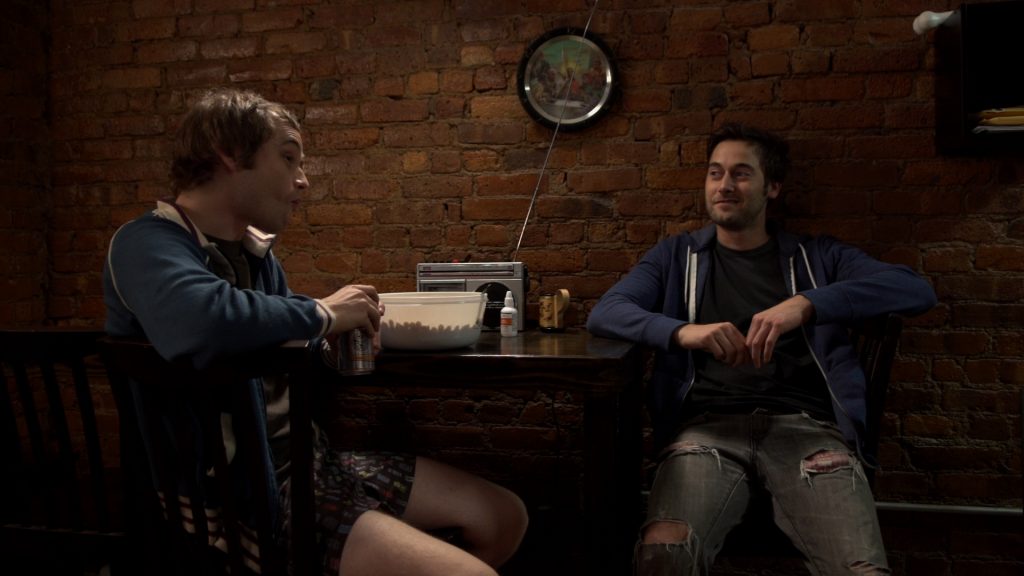
THE B-SIDE: Elsa Dorman’s Portrait Photography
Neon
Director: Errol Morris
Cast: Elsa Dorfman
Screened at: Park Ave., NYC, 4/27/17
Opens: June 30, 2017
A guess: most millennials never took a Polaroid picture or even heard of the camera that revolutionized photography in its day. You could take a snapshot, pull out photographic paper right from the base of the camera, wait sixty seconds and a copy would emerge. The quality was not as good as you could get from a traditional camera like a Nikon, but for taking pictures of the dog it was fine. The folks at Polaroid could not image that a day would come that another type of small photographic equipment, one that became wildly popular with consumers, could take a picture not in one minute but closer to a fraction of a second. And what’s more you could delete any shot that you did not like; and that of course is the digital camera, cheap enough, used primarily for snapshots, smaller than the Polaroid and perfect for people who do not have a minute to spare.
Nor would even people my age consider that one woman would become famous for taking Polaroid shots, not only with the usual snapshot equipment but with the use of a giant camera that could take photos 20” by 40”, an expensive machine not meant for casual moving around the country, and one which somehow in the hands of Elsa Dorfman could give permanence to celebrities especially in music and poetry.
“The B-Side” was produced perhaps because now, at the age of eighty, Dorfman is retiring. Though hardly a household name, she caught the interest of documentarian Errol Morris, who has done work of a more serious nature than photography. He may be best known for his recent movie “The Fog of War: Eleven Lessons from the Life of Robert S. McNamara,” which is the former secretary of defense’s view of America; and “Gates of Heaven,” about America’s pet cemeteries and the people who bury their dogs there.
In my view both former pictures are more challenging: the concept of a cemetery for dogs is an idea for which most of the world would consider America crazy; and the McNamara because we look for signs that the former war chief is apologetic about Vietnam. What’s more, Elsa Dorfman speaks slowly and without what most would consider a tsunami of enthusiasm. She is Jewish (mentioning that thrice), she went to Tufts undergraduate until 1959, she’s eighty, and her husband’s name is Harvey: all four categories I can relate closely with, and though she was just one year behind me at Tufts I do not remember her name.
Surprisingly she did not mention that she took pictures of people with serious problems: with breast cancer, with AIDS; but in fact reports that she liked to deal with happy subjects. Her “Beat” celebs include especially Allen Ginsberg, for whom she has many giant photos, one that shows the poet naked with the clothed person standing next to him. She displays all too quickly shots of Bob Dylan, Jorge Luis Borges, and Joni Mitchell, and could have used the opportunity to tell us her impressions, what made them ask her to take the photos, and how they reacted to what they saw. When she took shots of ordinary people as well, she would snap twice, then would ask each subject which of the two is preferred. The rejected ones she called the B-Side, hence the title of the film.
Documentarian Morris stays in the background, posing occasional questions, and treats his movie as a one-hander; which is to say one in which Dorfman dominates. The last time I recall such a film was André Heller and Othmar Schmiderer’s 2002 “Blind Spot: Hitler’s Secretary,” in which Traudl Junge, alone on screen, spoke for 82 minutes. Enlightening but hardly entertaining.
Dorfman is self-deprecating when she says that her photos do not “capture the souls” of her subjects, though Errol Morris tries his best to capture Dorfman’s soul. Still, Dorfman’s casual look at dozens of her photos, huge and small, could make the viewer think that chatting with her in her Cambridge, Massachusetts home over a cup of tea would serve as a pleasant enough afternoon, unintimidating.
Unrated. 76 minutes. © Harvey Karten, Member, New York Film Critics Online
Comments, readers? Agree? Disagree? Why?
Story – B
Acting –B
Technical – A-
Overall – B





